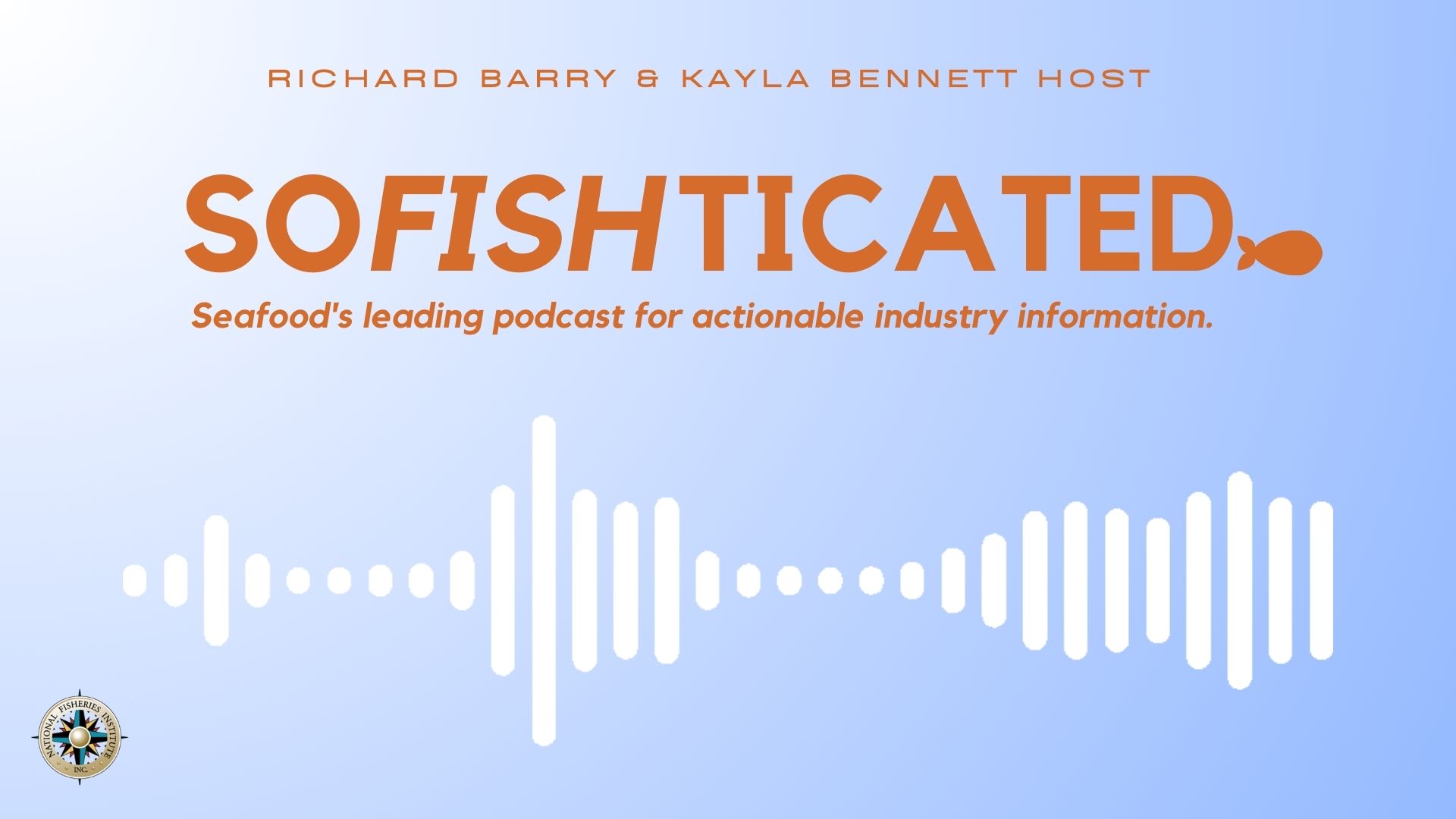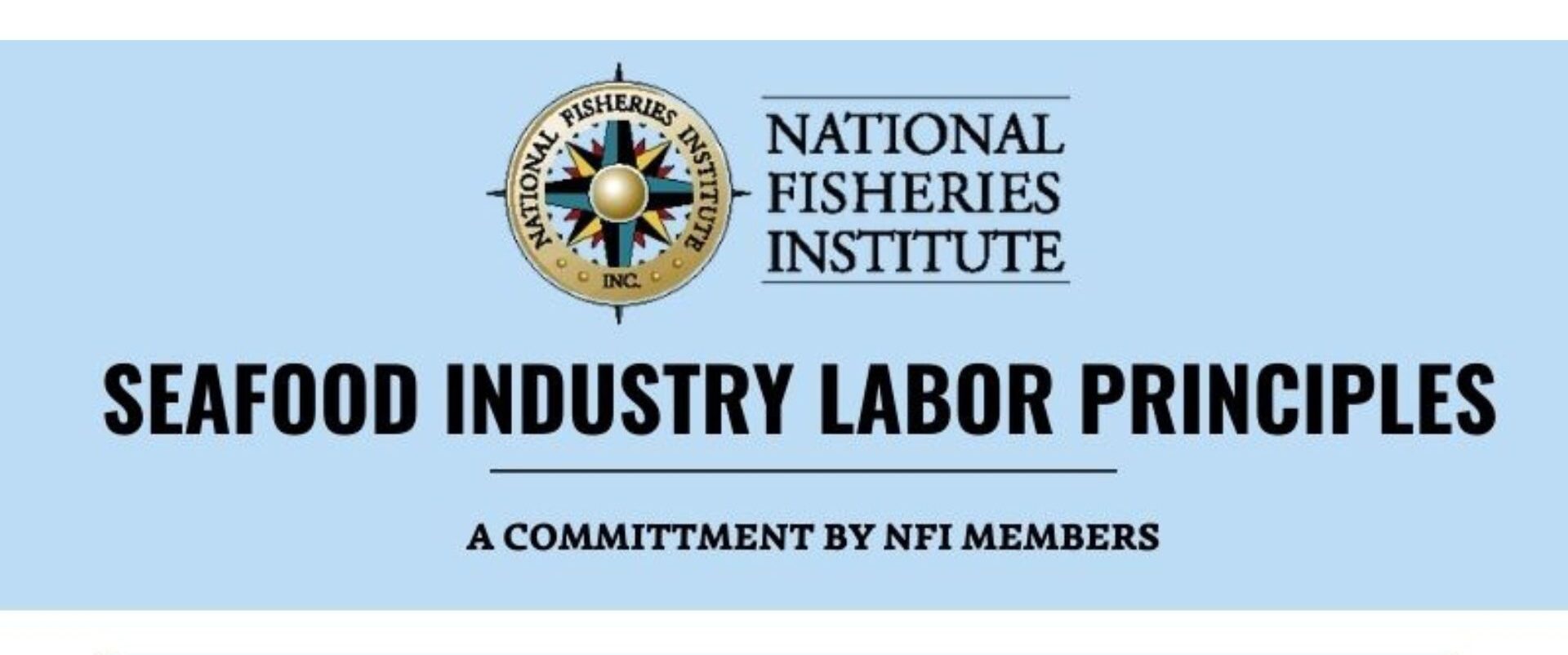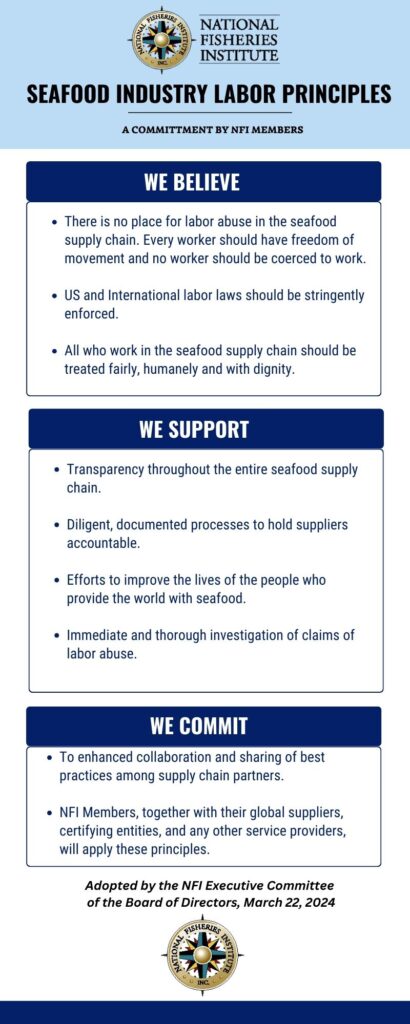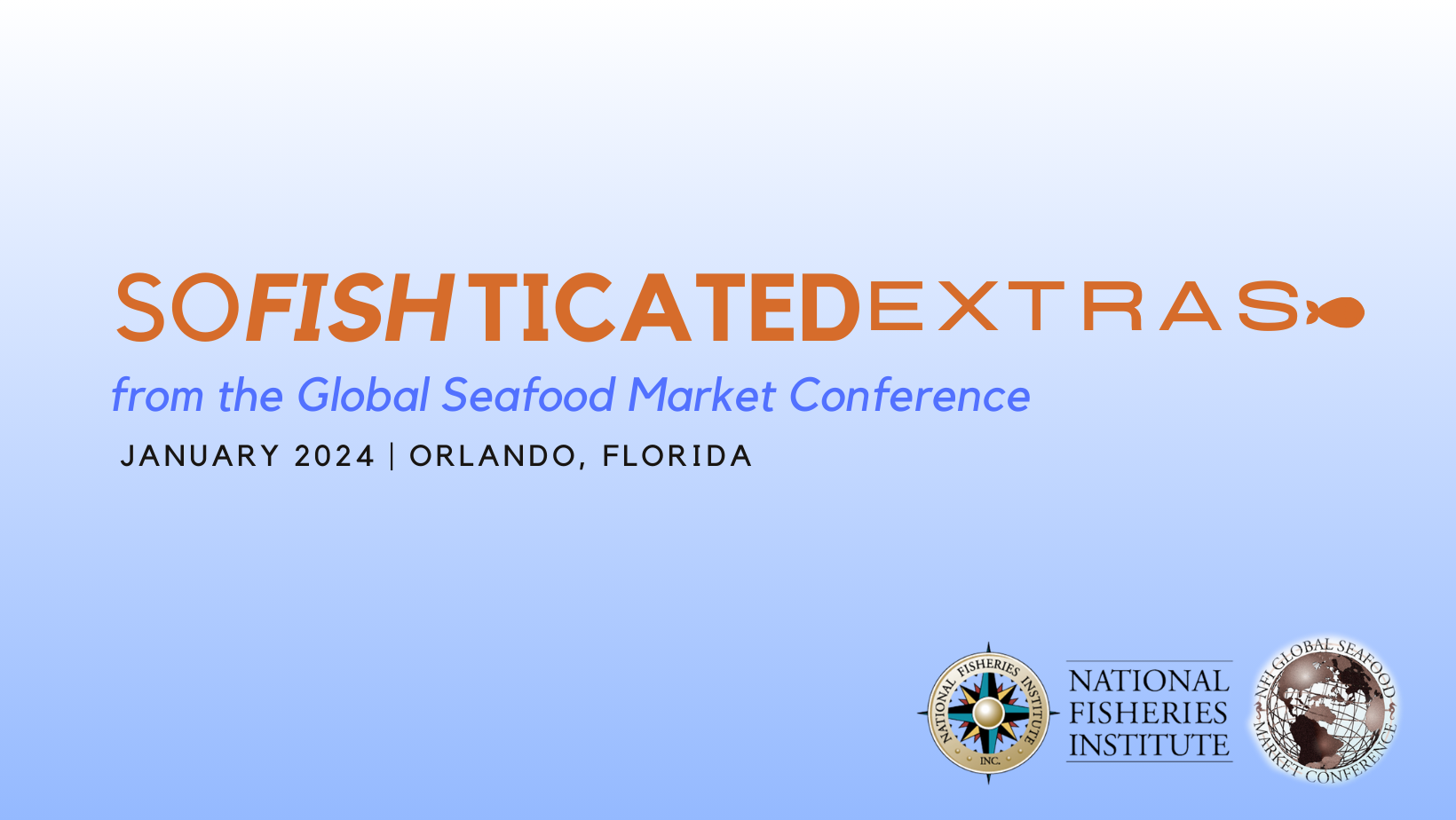All posts by NFI Media
Seafood Community Opposes H.R. 8507 Legislation
June 20, 2024
The Honorable Mary Sattler Peltola
153 Cannon House Office Building
Washington, DC 20515
Dear Congresswoman Peltola:
We write to express our deep concern regarding H.R. 8507[1]—legislation you have introduced that would create sweeping new federal mandates constraining the effective management of our nation’s fisheries. If enacted, H.R. 8507 would directly harm fishermen and coastal communities in Alaska and throughout our nation, along with countless other people who rely on a healthy domestic seafood sector for food, jobs, and their way of life. We ask you to withdraw this legislation.
Federal fisheries management in the United States under the Magnuson-Stevens Fishery Conservation and Management Act (“MSA”) is widely recognized as setting a global gold standard. Eight Regional Fishery Management Councils (“Councils” or “FMCs”) meet strict conservation requirements while balancing complex management tradeoffs through a rigorous, transparent, and stakeholder-informed decision-making process. Over time, this management system has become stronger. NOAA’s latest Status of Stocks report reveals that the number of federal fish stocks subject to overfishing reached an all-time low in 2022, while effective management approaches have restored a total of 50 fisheries that were previously depleted to healthy levels since 2000.[2]
H.R. 8507 disregards the lessons of the MSA’s success. Its top-down mandates would permanently wall off vast sections of ocean territory from important sustainable fisheries, boxing in not only fishermen but also scientists and managers who would be prevented from adapting their management approaches to changing ocean conditions over time. Our concerns are described in detail below.
- Science and Climate Change
At the heart of our federal fishery management system is science. The Councils constantly draw upon the best available science—including detailed scientific assessments from six regional NOAA Fisheries Science Centers—to inform their decision-making processes. Increasingly, this science shows climate-related shifts in our nation’s marine ecosystems, including significant changes in the distribution of fish populations and other marine life. In order to respond effectively, experts agree that management must be both dynamic and adaptive. Climate-resilient fisheries management must constantly anticipate, evaluate, and respond to changes in the ocean environment, and ensure that management actions remain calibrated to achieve defined objectives in light of those changes.
H.R. 8507 does the opposite. It compels Councils to adopt the archaic and counterproductive approach of creating permanent area-based closures that cannot be evaluated and modified as necessary over time. As fish stocks and other marine biota shift, the static area closures mandated by this legislation would leave managers hamstrung in their response. It is the wrong way to approach fisheries management in an era of changing ocean conditions.
- Habitat Conservation Under the Magnuson-Stevens Act
All fishery participants have a strong vested interest in conserving the marine habitat that drives fisheries production and ensures the health of the broader ocean environment. As a result, there is broad support across our industry for science-based habitat conservation measures. Strong habitat conservation requirements are currently enshrined in U.S. law and regulations and implemented by the eight Regional Councils. Those requirements are far more thoughtfully designed than the rigid and ultimately unscientific approach your legislation would require.
The Council Coordination Committee[3] recently examined all of the area-based conservation measures implemented in the United States Exclusive Economic Zone (“EEZ”) by the FMCs and other federal actions.[4] They calculated that 648 conservation areas covering more than 72 percent of the EEZ have been established.[5] They further calculated that area-based conservation measures specifically designed to advance conservation of the broader marine ecosystem span more than 56 percent of the EEZ, while management measures establishing prohibitions on all mobile bottom tending gear now covers more than 34 percent of the EEZ.[6]
Dozens of Council actions in recent years illustrate the continuing scale of habitat conservation efforts at the regional level. In 2017, for example, a new Deep Sea Coral Protection Area[7] spanning more than 38,000 square miles was established off the Mid-Atlantic Coast with support from both commercial fishermen and environmentalists. The following year, the Pacific FMC voted to protect more than 145,000 square miles of sensitive habitats along the West Coast, after a years-long cooperative process initiated by the fishing industry and environmental organizations.[8] In 2020, the New England FMC adopted sweeping new measures for the conservation of deep-sea corals in the region, spanning more than 25,000 square miles south of Georges Bank.[9] Later that same year, a Gulf of Mexico FMC Amendment using the Essential Fish Habitat (“EFH”) provisions of the MSA became final, extending new protections to 500 square miles of deep-sea coral habitat spanning 13 reefs and canyons stretching from Texas to the Florida Keys.[10] Meanwhile, the North Pacific FMC has established area-based conservation measures across more than 65 percent of the one million square nautical miles of ocean territory under its jurisdiction.[11]
These and hundreds of other existing area-based measures are designed by the Councils to achieve stated conservation objectives relating to fisheries and marine ecosystems. The precise nature of these measures varies greatly, reflecting the unique regional complexities of the objectives and management tradeoffs that are relevant in each case. Critically, under the MSA’s habitat conservation requirements, the Councils periodically re-examine previous designations based on updated assessments of environmental conditions.
Even now, the process for reexamining area closures as new information becomes available or conditions change is often too restrictive. Existing Marine Monument designations covering significant portions of the EEZ limit the ability of some Councils, most especially the Western Pacific FMC, to optimally manage fisheries under their jurisdiction. Similarly, any designation of a Habitat Area of Particular Concern (HAPC) can be difficult to revisit even as new evidence comes to light. In 1984, the South Atlantic FMC designated a 92 square nautical mile area off the East Coast of Florida, the Oculina HAPC, to protect corals. The area was subsequently expanded twice, adding an additional 353 square nautical miles of historic fishing area to its territory. Yet a recent vote by the South Atlantic FMC to reopen portions of the Oculina HAPC to shrimp fishing where corals were found not to be present was rejected by the Secretary of Commerce. H.R. 8507 will permanently legislate inflexibility in complex situations such as these.
We must continue to strengthen the ability of fisheries managers and scientists to make habitat conservation determinations based on the best current information rather than outdated determinations. Instead of moving us further in that direction, H.R. 8507 takes us backwards.
- Unworkable Federal Mandates and Timelines
The Regional Fishery Management Councils are currently undertaking myriad important analyses and actions to achieve critical conservation and management goals for the benefit of the marine environment and the people who rely on it. Your legislation would require them to deprioritize that vital work to meet new and poorly designed federal mandates.
Specifically, Section 2 of H.R. 8507 would require establishment of new gear definitions and categorizations, as well as the development of new “monitoring and enforcement” plans based on those definitions. This would need to be completed within 18 months. Section 3 of H.R. 8507 details additional new mandates. Within 12 months, Councils are required to establish new areas within their jurisdictional waters that will be permanently closed to sustainable American fisheries—closures that under this legislation the Councils could never revisit.
These new federal mandates and timelines are utterly unworkable. They would impose an enormous new field of work upon the Councils without any new resources or any reallocation of existing workloads. In our view this constitutes massive and deeply misguided political overreach, which would harm the critical work of federal fisheries management that goes on every day through the Councils.
- Conclusion
We should all take great pride in America’s seafood harvesters and the wider U.S. seafood industry they support. Our fisheries produce exceptional environmental outcomes; and they provide an affordable, low-carbon, and highly nutritious protein to tens of millions of American consumers. Commercial fisheries also make a meaningful contribution to the national economy, supporting $183 billion in sales.[12]
Perhaps most importantly, however, these fisheries support working families and coastal communities throughout our country. They create 1.6 million jobs,[13] often providing an economic lifeline to rural and socio-economically disadvantaged regions where few alternative economic drivers exist. Many of these fishery-dependent workers and communities are currently facing acute challenges due to unprecedented market conditions, strict regulations, climate-related changes in fisheries abundance or distribution, and increased costs of production. The introduction of H.R. 8507 shakes the confidence of seafood buyers and consumers in U.S. seafood, thereby casting a long shadow of uncertainty over the future opportunities of fishery-dependent communities and businesses at the worst possible time. With that critical context in mind, we once again urge you to withdraw your bill, and to redirect your policymaking to initiatives that will assist rather than harm this proud American industry.
Sincerely,
Julie Bonney
Executive Director
Alaska Groundfish Data Bank
Rebecca Skinner
Executive Director
Alaska Whitefish Trawlers Association
Alvin D. Ostberback
Mayor
Aleutians East Borough
John Whiteside, Jr.
General Counsel
American Scallop Association
Trey Pearson
President
American Shrimp Processors Association
Stephanie Madsen
Executive Director
At-sea Processors Association
Vincent Tutiakoff, Sr., Mayor
William Homka, City Manager
City of Unalaska
Eric Hansen
Chairman
Fisheries Survival Fund
Jerome Young
Executive Director
Florida Keys Commercial Fishermen’s Association
Scot Mackey
Executive Director
Garden State Seafood Association
Paige Morrison
President
Georgia Commercial Fishermans Association
Chris Woodley
Executive Director
Groundfish Forum
Acy Cooper
President
Louisiana Shrimp Association
Heather Mann
Executive Director
Midwater Trawlers Cooperative
Lisa Wallenda Picard
President & CEO
National Fisheries Institute
Jerry Leeman
Chief Executive Officer
New England Fishermen’s Stewardship Association
Jackie Odell
Executive Director
Northeast Seafood Coalition
Glenn Skinner
Executive Director
North Carolina Fisheries Association
Yelana Nowak
Director
Oregon Trawl Commission
Alexis Meschelle
Executive Director
Organized Fishermen of Florida
Julie Decker
President
Pacific Seafood Processors Association
Aja Szumylo
Executive Director
Pacific Whiting Conservation Cooperative
Kiley Thompson
President
Peninsula Fishermen’s Coalition
Christopher Brown
President
Rhode Island Commercial Fishermen’s Association
Nick Edwards
Secretary
Shrimp Producers Marketing Cooperative
Rocky Magwood
President
South Carolina Shrimpers Association
John Williams
Executive Director
Southern Shrimp Alliance
Captain Bob Zales
Executive Director
Southeastern Fisheries Association
Captain Bob Zales
Fisheries Management Consultant
Southern Offshore Fishing Association
Hank Soule
Manager
Sustainable Harvest Sector
Maria Barrera-Jaross
Executive Director
Texas Shrimp Association
Brent Paine
Executive Director
United Catcher Boats
Bryan Jones
Director
United States Shrimpers Coalition
Lori Steele
Executive Director
West Coast Seafood Processors Association
Companies:
Sam Martin
Chief Operating Officer
Atlantic Capes Fisheries, Inc.
Michael Scola
President
Boston Sword & Tuna, Inc.
Colin Bornstein
President
Bornstein Seafoods, Inc.
Terry Molloy
General Manager
Chesapeake Bay Packing, LLC
John Norton
President
Cozy Harbor Seafood, Inc.
Deb Sanderson
Chief Executive Officer
Eastern Traders Ltd.
Craig Weatherley
President
The Florence Group, Inc.
Wayne Reichle
Owner & President
Lund’s Fisheries, Inc.
Todd Michalik
President
Marder Trawling, Inc.
Ronald Enoksen
President
Nordic Fisheries, Inc.
Ruth Christiansen
Director, Government & Industry Affairs
Ocean Peace, Inc.
Lindsey Wells
Managing Director
Omega Sea, Inc.
Scott Hutchens
Executive Vice President
Raw Seafoods, Inc.
Meghan Lapp
Fisheries Liaison
Seafreeze Ltd / Seafreeze Shoreside
Guy B. Simmons
Chief Operating Officer
Sea Watch International
Ray Drouin
President
Skip’s Marine Supply, Inc.
Tom Dameron
Government Relations & Fisheries Science Liaison
Surfside Foods LLC
Ryan Clark
President & CEO
The Town Dock
Kirk Larsen
President
Viking Village, Inc.
cc: The Honorable Bruce Westerman
The Honorable Raul Grijalva
The Honorable Cliff Bentz
The Honorable Jared Huffman
The Honorable Lisa Murkowski
The Honorable Dan Sullivan
[1] https://www.congress.gov/bill/118th-congress/house-bill/8507
[2] https://www.fisheries.noaa.gov/national/sustainable-fisheries/status-stocks-2022
[3] https://www.fisheries.noaa.gov/national/partners/council-coordination-committee
[4]https://static1.squarespace.com/static/56c65ea3f2b77e3a78d3441e/t/6489c43523c0b1595a5b8d54/1686750280097/Evaluation-of-Conservation-Areas-Report-2023.pdf
[5] Id., Tables 5 and 6.
[6] Id., Tables 6 and 7.
[7] https://www.fisheries.noaa.gov/resource/map/frank-r-lautenberg-deep-sea-coral-protection-areas-map-gis
[8] https://www.fisheries.noaa.gov/story-map/story-map-west-coast-groundfish-amendment-28
[9] https://www.fisheries.noaa.gov/bulletin/final-rule-designate-deep-sea-coral-protection-areas
[10] https://public-inspection.federalregister.gov/2020-21298.pdf
[11]https://static1.squarespace.com/static/56c65ea3f2b77e3a78d3441e/t/6489c43523c0b1595a5b8d54/1686750280097/Evaluation-of-Conservation-Areas-Report-2023.pdf, Table 6.
[12] https://www.fisheries.noaa.gov/resource/document/fisheries-economics-united-states-report
[13] https://www.fisheries.noaa.gov/resource/document/fisheries-economics-united-states-report
SoFISHticated Season 4, Episode 3: From Rockfish to Robots: The Future of AI in the Seafood Industry
Seafood’s leading podcast for actionable industry information.
Listen in and buckle up, this episode of SoFISHticated is taking us to new places: the world of Artificial Intelligence. Saif Khawaja, Founder of Shinkei Systems, joined co-hosts Richard and Kayla for a knowledge-packed episode about how AI is being incorporated into the seafood industry.
Key takeaways:?
- Seafood is behind when it comes to AI integration.
- There’s always going to be a person behind AI, but is there an upside for a labor-strapped industry?
- First adopters are starting with AI in the area of supply chain and logistics.
Seafood: 1, Poor Reporting: 0, You’re Missing the Point
If there’s one message to get across to news outlets, like Newsweek and The New York Times, it’s this: you’re missing the point.
Your recent articles about studies that show mercury levels in seafood have remained the same for the past 30 to 50 years may be accurate but they’re a surface level look. What isn’t reported is that during the past 30 to 50 years, American consumers have not gotten sick because of mercury in seafood. The fish aren’t dying of mercury poisoning— and neither are consumers… isn’t that a good thing? There’s something at play here that reporters are missing or ignoring.
Americans are simply not exposed to levels of mercury in seafood that warrant concern. Not only is seafood consumption woefully low, but the 10 most popular types of seafood in the United States represent more than 75% of all fish eaten and none of them are considered high in mercury.
So, why all this theoretical handwringing about mercury levels that haven’t changed for decades? Here’s another unreported fact; there are no cases of mercury toxicity due to the normal consumption of commercial seafood found in published, peer-reviewed journals… in the last 30 or 50 years for that matter.
Trace amounts of mercury found in commercial fish are by and large naturally occurring. The presence of mercury and the fact that it is naturally occurring was proven in the California courts when America’s canned tuna companies fought against mischaracterizations that canned tuna was polluted by manmade contaminants and required labels to warn consumers.
The California courts were clear in the original case all the way back in 2006, a verdict upheld on appeal by the California Attorney General in March 2009, that the mercury in canned tuna is naturally occurring and in amounts too small to be of any health consequence. Therefore, it did not meet the standard for labels under that state’s Safe Drinking Water and Toxic Enforcement Act of 1986, commonly known as Proposition 65.
Any media messaging that could turn people away from eating a food they are strongly encouraged to eat more of requires eyebrows to be raised and questions to be asked.
Medical professionals encourage consumers to eat more, not less, seafood. Not only can it dramatically combat leading causes of death—the Journal of the American Medical Association found low seafood/ omega-3 fats account for 7.8% of heart disease, stroke, and type 2 diabetes deaths, making it a top five contributor to these preventable conditions—but the Dietary Guidelines for Americans have established that eating seafood during pregnancy contributes to “improved infant health outcomes, such as visual acuity and cognitive development.”
Let’s face it: seafood is good for you and mercury levels staying the same as they were 50 years ago is not a nutritional concern. The only concern that should be written into the narrative is supported by health professionals: Americans aren’t eating enough seafood.
SoFISHticated Extras: Preparing Sushi at Home
If you listened to our episode on sushi with Michael McNicholas of Culimer USA LLC, you may have heard the word “omakase.” But in this SoFISHticated Extra we learn a new term—what exactly is “homakase”?
Tune in as hosts Richard and Kayla dive into preparing sushi at home and its rising popularity with Michael McNicholas.
SoFISHticated Season 4, Episode 1: The Sushi Market and NFI Sushi Council
In the first SoFISHticated episode of 2024, co-hosts Richard and Kayla are joined by Michael McNicholas of Culimer USA LLC, to talk about a product that’s so well know, like Cher or Prince, it goes by only one name: Sushi.
The three will walk through the sushi market—its history and its future—and talk about the newly formed NFI Sushi Council, including its mission and how to join. This episode is pretty raw-some, so be sure to tune in.
Key takeaways:?
- Does sushi still have room to grow?
- What’s holding consumers back from trying sushi?
- Why is now the time to join NFI’s Sushi Council?
NFI Internship 2024: Communications & Multimedia Position
The National Fisheries Institute’s Internship Program
Communications & Multimedia Intern
National Fisheries Institute — the leading trade association for the commercial seafood industry — is seeking a Communications & Multimedia Intern to work in-stride with NFI’s communications team. This internship opportunity will provide the selected candidate with excellent experience in industry storytelling — both proactive and reactive — in the Nation’s Capital.
This hybrid internship will be managed by the Communications team in its headquarters just outside Washington, D.C. Current undergraduate juniors and seniors with communications & marketing, and/or information graphics or multimedia design backgrounds are encouraged to apply for this paid internship, which will begin in May/June 2024.
The deadline to apply is August 9, 2024
When applying to this internship position, please send the following to NFI’s Media & Communications Manager, Kayla Bennett, kbennett@nfi.org
- Current resume.
- Cover letter explaining your skill set and why you should be considered for this opportunity.
- At least two work/class writing samples (such as published articles, news releases, research papers, creative briefs, infographics, design projects, website pages, PowerPoint presentations, etc.).
Potential Opportunities:
- Help manage NFI content and collateral to our trade association members via videos, newsletters, website, and social media.
- Develop media lists, influencer lists, media briefs, editorial calendars, and media results reports.
- Participate in both internal team and external meetings on Capitol Hill or with member companies.
- Work on press releases, media statements, op-eds, infographics, communication & media toolkits, fact sheets, collateral copy, start-to-finish video production, social media content/campaigns, and other materials.
- Create website material and resources for NFI’s branded platforms.
- Help record, produce, and market NFI’s podcast via several platforms.
- Conduct social media analytics and brand research as well as audits.
- Coordinate interactions with local, trade, and national media, as well as influencers, when appropriate.
- Support and enhance NFI’s brands in printed and digital platforms.
- Other duties, as assigned.
Other potential opportunities for growth:
- Gain experience in technical skills like writing, editing, digital/web design, social media management and research as well as broader skills like understanding the integration between government affairs and communications strategy.
- Tailor existing internship program to meet individual needs.
- Write creative media briefs and blog posts.
- Have one-on-one mentoring with designated individuals.
- Exposure to a variety of marketing and communications focus areas, including media relations, internal communications, public affairs, strategic research, branding, crisis communications, social media, and more.
Ideal applicants possess:
- Strong research, organizational and writing skills.
- A proven understanding of marketing and communications, social media, and online and traditional media
- Excellent communication skills
- Proficiency using AP Style is preferred.
- Solid critical thinking skills.
- Ability to take initiative and assume responsibility.
- Ability to work independently and in team settings.
- Excellent attention to detail, including proofreading.
- A positive attitude and drive.
- Strong Microsoft Word, Excel, and PowerPoint skills.
- Prior internship experience is a plus.
###
GSMC SoFISHticated Extras: Day 3
A 3-minute download on the insights and data from Day 3 of the Global Seafood Market Conference
Here’s what you missed:
• Whitefish woes & wows
• Gen Alpha toddles towards seafood
• Are AI’s Digital Twins the Future of Seafood Market Research?
P.S. If you missed Bob DeHaan’s Day 3 antitrust briefing… let’s just say, you missed out.
GSMC SoFISHticated Extras: Day 2
Seafood’s leading podcast for actionable industry information.
A 4-minute download on the insights and data from Day 1 of the Global Seafod Market Conference
Here’s what you missed:
- Find out why “chaos” is kind of our brand
- Why land-based protein would love to have seafood’s problems
- Why it’s good to be “annoyingly boring”
GSMC SoFISHticated Extras: Day 1
A 4-minute download on the insights and data from Day 1 of the Global Seafod Market Conference
Here’s what you missed:
Why retail sales are better than you think
Shrimp Panel—the anti-dumping effect
Taylor Swift takes over the seafood roundtable… no joke








